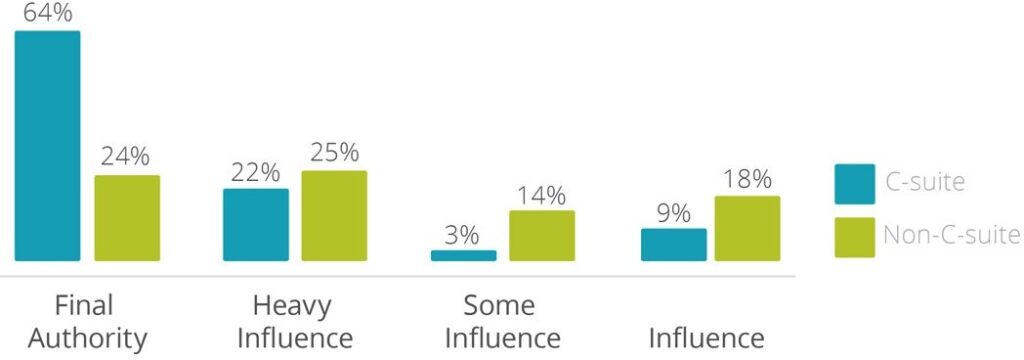Managing a handful of leads is easy.
You can see where they came from, understand their needs, and evaluate your tactics to collect information and hone your skills.
Once your business grows, however, things get a little more complicated.
Without a comprehensive sales lead management strategy, things start falling through the cracks and your data goes sour.
Sadly, this also leads to bad personalization strategies and lost revenue.
The lead management landscape has changed drastically as automation and relationship management tools have become more accessible to businesses of all sizes. Let’s look at some strategies you can implement right now to stay organized and engage your leads.
What Does Sales Lead Management Look Like Today?
Previously, lead management was a tedious and frustrating process.
You needed to look at each lead from multiple angles, break them up into distinct groups, hand them over to the right department, and continue the process indefinitely.
There are a few major problems with this process. For starters, you’re working with old data.
By the time you process leads through your system, divide them into categories, and add them to your spreadsheet, the information you’ve collected is already outdated.
It’s no surprise that 62% of businesses say they’re working with data that’s up to 40% incorrect. Job roles change, people switch jobs, the company needs shift – the world turns.
Inaccurate data poses a big problem because you can’t nurture leads properly if the information you’ve collected on them is wrong. However, poor data also throws off your personalization strategy for other leads that come in.
The most valuable data you have is the first-party data you’ve collected through your own website and a solid sales lead management system is the only way to keep it clean.
Today, technology like automation and AI supply several tools and options for managing your leads and keeping track of data seamlessly in real-time.
4 Sales Lead Management Strategies Your B2B Needs in 2020
Implementing these sales lead management strategies will help you first create meaningful relationships with your leads.
Not everyone is ready to buy right away but forming relationships can boost your conversion rate by 1.2x and each deal size by 1.3x.
Plus, you’ll be able to develop effective personalization strategies for both future and current leads. After all, clean data is at the heart of every relevant personalization campaign.
1. Divert Your Attention to Intent Data
Intent data is important because it tells you where a lead is at in the buying process and which leads visit your website and are actively looking to close a sale.
According to Marketing Profs, companies with account-based marketing strategies generate 208% more revenue than those that don’t run ABM campaigns. Intent data allows you to create effective ABM campaigns because it’s as close as you can get to real-time data.
Look at it this way. The average B2B buying process involves nearly seven different people. While C-level executives have the final say in 64% of cases, lower-level employees still play important roles in influencing their decision.
Without intent data, how can you create content and retargeting campaigns to reach every role involved in this process? Your data will never be accurate enough to make a difference.

Source: Think with Google
2. Only Collect High-Quality Leads
Do you feel like you’re running a witch hunt following up with leads that aren’t qualified? It’s a waste of time and resources. Thanks to automation technology, it doesn’t have to be this way anymore.
If you’re hiding all your best content behind a gate and requesting every visitor give you their email address, now is a good time to re-evaluate that strategy – how’s it working for you?
When you collect information from everyone who visits your website, that data doesn’t tell you much about your actual leads or target audience. Instead, it throws off your data and makes your process even more confusing.
Get rid of your forms completely. Give your visitors the choice to supply their email address when they’re sure they want to stay in touch with you.
Furthermore, it’s also important to employ a combination of automation and human verification to ensure you’re only collecting information from real people and bona fide business addresses.
3. Create an Environment for Leads to Self-Nurture
An amazing thing happens when you remove forms: your leads start to nurture themselves at their own pace.
At Hushly, we recommend throwing out forms in favor of features like self-nurturing landing pages. An adaptive content hub, for example, puts all your best content in one location where it’s broken up into categories.
Some leads like in-depth blogs, others like eBooks, 65% like podcasts, and 49% prefer videos – give them what they want in one place. Once they start clicking, an algorithm will continue showing them relevant content.
In terms of sales lead management, you can collect this information to score your leads and personalize your communication with them.
4. Follow Up with Highly Relevant Retargeting Content
If a lead visits your website and spends two hours reading your eBooks, that’s a good sign they’re interested in closing a sale – but you can never be sure.
Now’s the time to step in with a sales lead management strategy. Use the information you collected about the content they read to send out retargeting campaigns through email and LinkedIn.
If they don’t engage with your retargeting campaigns, something isn’t right. If they do, you can gauge their spot in the sales cycle.
Create the Website Your Leads Want Today
Effective lead management starts with a user-friendly website. Visitors arrive at your website and they want to educate themselves at their own pace. They don’t want to read a blog post, fill out a form, and wait for you to bombard their inbox with emails.
Get rid of forms and create the website your leads want. It’s much easier to implement sales lead management tactics when you’re only working with highly qualified leads and accurate data.
Self-nurturing landing pages let visitors convert into leads and educate themselves about your company without forms. See a Hushly self-nurturing landing page in action here!



